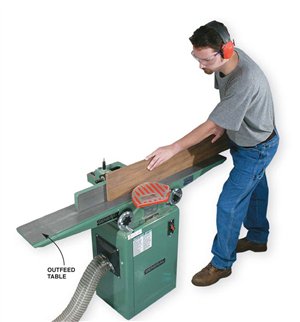We may receive a commission when you use our affiliate links. However, this does not impact our recommendations.
Q & A: Jointer Quandary
Q:
I’ve been having trouble getting
boards straight their full length on my
new jointer. I spent an hour carefully
resetting the knives, but that didn’t help.
Do you think it’s me or the machine?
A:
Could be either! First,we’ll assume that your
jointer’s infeed and outfeed tables are straight
and parallel. Then, the answer may lie in changing
your jointing technique or minutely adjusting
the height of your jointer’s outfeed table.Here are
three common pitfalls and how to avoid them.
ProblemPersistent Convex Edge Sometimes an edge remains curved every time |
SolutionJoint the Belly First This is a problem of technique, not an incorrectly adjusted machine. |
ProblemA Sniped End Sometimes a jointer takes a heavy bite at the |
SolutionRaise the Outfeed Table Although you did your best to set the knives level, it doesn’t always work. |
ProblemA Tapered Cut Sometimes a cut mysteriously trails off to nothing. |
SolutionLower the Outfeed Table Rule out the possibility that you’re dealing with a slightly convex edge |
|
This story originally appeared in American Woodworker December, 2001. |
|
Here are some supplies and tools we find essential in our everyday work around the shop. We may receive a commission from sales referred by our links; however, we have carefully selected these products for their usefulness and quality.













